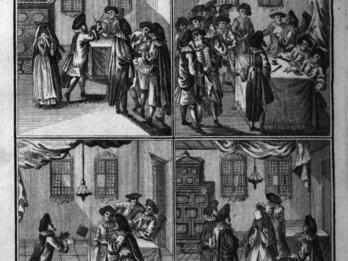They call him Meir
When I heard that Meir the teacher had exchanged his glory for futility,1 I said:
They call him Meir,2 but he has no light, for all the lights around him have gone dim.
Indeed, he has a thick cloud of darkness, like the darkness in Egypt,
When no person saw their fellow. And they that named him knew how he would end up, and they prophesied,
Calling him thus, just as the sages called night “light,”
And they knew that a blind person is called “flowing with light,” and charcoal is called “white”3—thus did they name him!
Translated by .
Gabriel
Wasserman
Notes
[I.e., that he had apostasized to Christianity.—Trans.]
[The name literally means “shining, enlightening.”—Trans.]
[The first two euphemisms, “light” (or) for nighttime, and “flowing with light” (sagi nahor) for a blind person, are from talmudic literature. The third expression, “white” for charcoal, may be from the vernacular speech of the poet’s own time.—Trans.]
Credits
Abraham Bukrat, “They Call him Meir (Hebrew),” in Hebrew Poetry in North Africa(Ha-shirah ha-ivrit be-tsafon afrikah), ed. Efraim Chazan (Jerusalem: Magnes Press, 2003), 213.
Published in: The Posen Library of Jewish Culture and Civilization, vol. 5.




